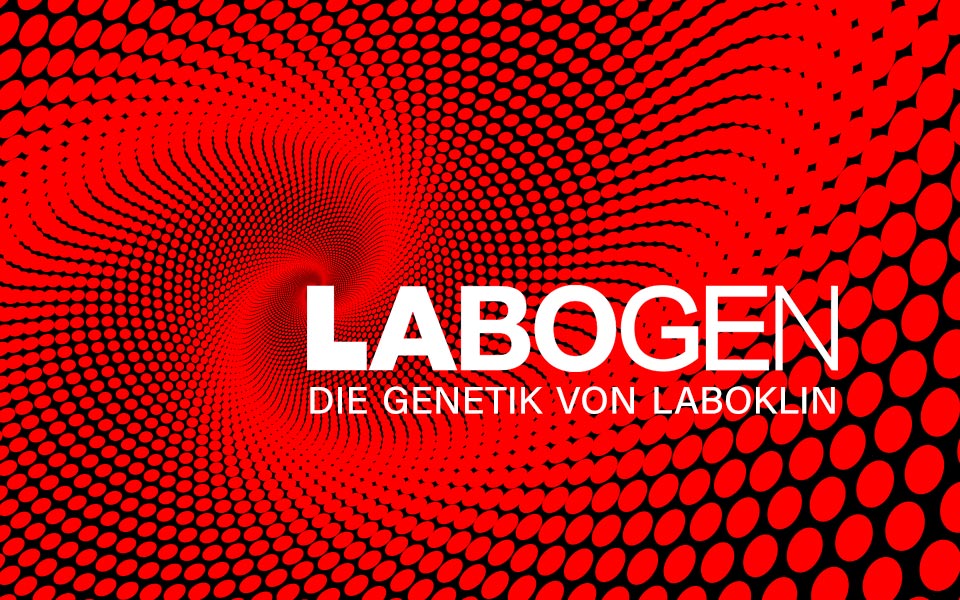K-Lokus brindle
K-locus brindle
General description
The K locus is crucial in determining coat color, dictating whether pigments are uniformly distributed or form distinct patterns in a dog's coat. There are two primary gene variants (KB and ky), leading to three known alleles—KB, kbr, and ky—each influencing coat color differently (solid pigmentation, brindle, patterns). The dominant KB allele (genotype KB/*) results in a solid coat color, with pigments either uniformly mixed or individually expressed. Conversely, the recessive ky allele allows for a mixed distribution of the pigments eumelanin and pheomelanin, with the A locus significantly influencing this pattern, especially in the ky/ky genotype. The kbr allele, responsible for the brindle pattern (dark eumelanin stripes on a lighter pheomelanin base), is a complex duplication of KB and ky. It's recessive to KB but dominant over ky. Brindle's visibility and extent can vary greatly and can't be precisely predicted genetically. Accurate K locus analysis often requires additional testing, especially when involving the kbr allele. The choice of testing method may vary based on the breed and coat color of the dog.
Order details
| Test number | 8893 |
| Sample material | 0.5 ml EDTA blood, 2x cheek swab, 1x special swab (eNAT) |
Test specifications
Detailed description
The K locus plays an important role in the inheritance of coat colour, as variants at this gene locus determine whether the pigments are distributed uniformly or expressed separately in the individual hairs or on the dog's body. There are basically two different gene variants (KB and ky) which, when combined, lead to the three known alleles KB, kbr and ky and the associated effects on coat colour (uniform pigmentation, brindle, coat pattern).
If at least one dominant allele KB is present (genotype KB/*), this allele will be expressed. KB is responsible for a solid-coloured coat in the pigmented areas, as the pigments are expressed together or individually, but uniformly overall.
In contrast, the recessive ky allele allows the pigments eumelanin and pheomelanin to be distributed in relation to each other. The effects of the A locus on pigment distribution are only fully visible with the homozygous ky/ky genotype.
The allele kbr, which is responsible for the brindle, is a heterogeneous duplication of the variants KB and ky on one chromosome. The effect of this duplication can be seen in the brindle, i.e. dark (eumelanin) stripes on a light (pheomelanin) base colour. Brindle is only visible in those areas where a light colour is otherwise present (e.g. with black&tan colouring in the light markings). The kbr allele is recessive to KB, but dominant to ky. The expression of the colouring is very variable and can vary from a few isolated stripes to almost completely dark dogs. It is not yet possible to make a statement about the expression of brindle via genetics.
Note: kbr can also be defined as KB+ky, which is why the KB/ky genotype is always determined in the classic detection of the KB and ky variants for dogs with at least one kbr allele. Therefore, only an additional analysis procedure for dogs with the KB/ky genotype in the classic K locus test enables the actual division into the possible genotypes KB/ky, KB/kbr, kbr/kbr and kbr/ky and thus also a correct statement on the possible inheritance of this trait.
Depending on the breed or colour of the dog, the simple K locus test may be sufficient, or a combination of analysis methods may be necessary.
K locus KB (uniform pigmentation) > kbr (brindle) > ky (coat pattern) | ||
Genotype | Inheritance | Phenotype |
KB/KB | does not inherit brindle or coat pattern | uniform pigmentation in pigmented areas |
KB/kbr | can inherit brindle | |
KB/ky | can inherit coat pattern | |
kbr/kbr | does not inherit coat pattern | eumelanin stripes on pheomelanin base |
kbr/ky | can inherit coat pattern | |
ky/ky | always inherits coat pattern | pigments can be distributed in relation to each other ⇒ A locus |


